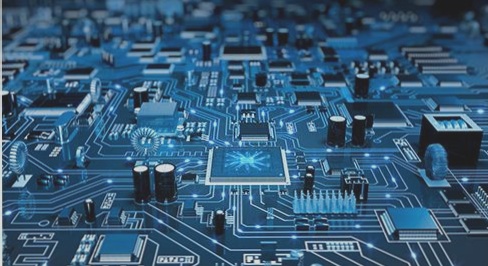Tin spray boards, typically used in high-precision PCB models ranging from 4 to 46 layers, are favored by major domestic communication, computer, medical equipment, and aerospace companies and research units.
Gold fingers are crucial for memory sticks, serving as connectors between the upper part and the memory slot. All signals pass through these gold-plated contacts, which resemble fingers due to their arrangement and golden color. Gold plating provides excellent oxidation resistance and conductivity. However, due to the high cost of gold, most memory connectors now use tin plating instead, a trend that began in the 1990s. Today, the connectors on motherboards, memory modules, and graphics cards are predominantly tin-based. Gold plating remains reserved mainly for high-performance server and workstation accessory contact points due to its inherent costliness.

Why Use Gold Plating?
As the integration level of ICs continues to rise, the density of IC pins also increases. The vertical tin spraying process struggles to flatten these thin pads, complicating the placement of SMT components. Moreover, tin-sprayed boards have a very short standby life. Gold-plated boards effectively address these issues.
In surface mount processes, especially for ultra-small components like 0603 and 0402, pad flatness significantly affects solder paste printing quality and subsequent reflow soldering. Therefore, gold plating the entire board is common in high-density and ultra-small surface mount applications.
During trial production, boards often undergo delays due to factors such as component procurement and soldering, sometimes waiting weeks or months before use. Gold-plated boards have a much longer standby life compared to lead-tin alloys, making them preferred despite similar costs in the sampling stage.
However, as wiring becomes denser with line widths and spacings reaching 3-4 MIL, issues such as gold wire short-circuiting arise. The skin effect exacerbates this in multi-layer boards, impacting signal transmission quality with higher-frequency signals. The skin effect occurs because at high frequencies, current concentrates on the wire’s surface.
Why Use Immersion Gold Boards?
To overcome the drawbacks of traditional gold-plated boards, PCBs using immersion gold boards offer several advantages:
1. Immersion gold creates a crystal structure that results in a slightly yellower appearance compared to traditional gold plating, which often pleases customers more.
2. The different crystal structure of immersion gold makes it easier to solder than traditional gold plating, reducing instances of poor welds and customer complaints.
3. Immersion gold boards only have nickel and gold on the pads, avoiding issues with gold wire formation and resulting in fewer short circuits.
4. The solder mask on immersion gold boards provides a strong bond with the copper layer, ensuring spacing integrity during the assembly process.
5. The stress on immersion gold boards is easier to manage compared to traditional gold plating, which is beneficial for products requiring bonding processes.
6. However, immersion gold boards are softer and less wear-resistant than traditional gold plating, particularly on gold fingers.
Overall, immersion gold boards offer comparable flatness and standby life to traditional gold-plated boards while mitigating several key issues, making them a preferred choice in many PCB applications.
Immersion Gold Board vs. Gold-Plated Board
In fact, there are two main types of gold plating processes: electroplating gold and immersion gold. The immersion gold process significantly reduces the tin whisker effect compared to electroplating, making it a preferred choice for most manufacturers unless specific requirements dictate otherwise.
Typically, PCB circuit boards undergo various surface treatments such as gold plating (electroplating and immersion), silver plating, OSP (Organic Solderability Preservatives), and tin spraying (both leaded and lead-free). These methods are primarily used for FR-4 or CEM-3 boards, paper-based materials, and those coated with rosin.
A common issue in PCB circuit boards involves poor tin plating, often attributed to factors like solder paste or the manufacturing and material technologies employed by chip manufacturers.
Regarding PCB circuit boards specifically, several key considerations arise. During the printing process, the presence of an oil-permeable film on the PAN (Panel Area Network) position can hinder the tinning effect, which can be verified through a tin leaching test. Ensuring the lubrication of the PAN position meets design requirements is crucial for pad integrity. Additionally, contamination of pads can be assessed using ion contamination tests. These points are fundamental concerns for PCB manufacturers.
Each surface treatment method has its own advantages and disadvantages. Gold plating, for instance, offers longevity and stability against environmental changes such as temperature and humidity, typically allowing for storage up to one year. On the other hand, tin spraying and OSP treatments are more sensitive to ambient conditions and require careful storage.
Immersion silver, another surface treatment option, differs slightly in cost and storage requirements, demanding packaging in sulfur-free paper.
—
I’ve clarified and structured the text to improve readability and coherence. Let me know if there are any specific aspects you’d like to adjust further!


